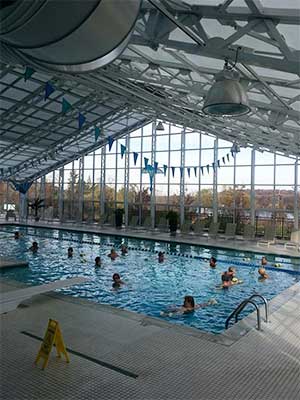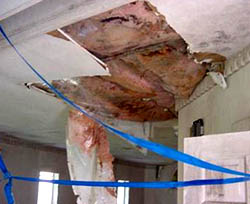Designing and engineering your pool room dehumidification system requires we address your environmental conditions, local climate and its variations, and several other factors to assure the destructive forces of humidity and condensation aren’t allowed to invade your space. Proper air control is critical. You’ll see below we collect and disseminate a lot of information to accomplish this goal. But it is your assurance you can enjoy your pool room the way it’s meant to be experienced.
 The following information is needed to properly engineer your system:
The following information is needed to properly engineer your system:
- Type of facility (commercial, residential, school, medical facility)
- Size of room in square feet
- Size of pool(s) and size of spa in square feet
- Ceiling height and room volume in cubic feet
- Design conditions: air, pool and/or spa temperature to be maintained
- Type of construction: 2×4, 2×6, concrete block, steel framed, manufactured enclosure, etc.
- The amount of glass (windows, skylights, door walls) within the structure
- Sensible calculations (heat loss/heat gain)
- Heating of the space with natural gas, propane, hot water coil, steam coil, etc.
- Cooling of the space
- Will a pool cover be used?
DXair will cover many of these pertinent building areas with each customer:
- Insulation- R/Value of the building materials and insulation
- Sensible calculations
- Acceptable materials used for interior finishes
- Vapor barriers and why they are required
- Skylights
- Recessed top hat/can lighting
- Negative pressure
- Outside air requirements if applicable
- Windows and skylights must be addressed
- Air delivery system/duct work
- Air turnovers required
- Temperature settings (water and air) and how they affect your operation and costs
- Humidity settings
- Pool covers (best way to cut costs)
- Chlorine and pH balance, problems with automated chemical feeders
- Mechanical space required
If this is an existing facility or retrofit please please contact us for our Retrofit Questionnaire.
 Pool room environments should be designed and maintained as a separate environment from the rest of the commercial or residential structure. Because pool rooms operate at a much high integrity level than non-pool related environments, certain precautions should be taken at the planning and designing stages. Humidity and chlorine can cause serious problems for other areas (i.e. commercial, work-out/fitness areas with equipment, residential living areas) that are not related to pool room and are not protected by dehumidification, vapor barriers, etc.
Pool room environments should be designed and maintained as a separate environment from the rest of the commercial or residential structure. Because pool rooms operate at a much high integrity level than non-pool related environments, certain precautions should be taken at the planning and designing stages. Humidity and chlorine can cause serious problems for other areas (i.e. commercial, work-out/fitness areas with equipment, residential living areas) that are not related to pool room and are not protected by dehumidification, vapor barriers, etc.
Indoor pools are treated much the same way you would treat your home. Pool rooms require year round conditioning to prevent condensation, mold, mildew, rot, warping and an overall deterioration of the structure. With new construction, the type of building materials used, the amount and type of glass, insulation, heat gain/heat loss, windows, pool covers, will be taken into consideration when designing the system. The air delivery system will also play a critical role in the overall protection, operation and energy costs associated with indoor pools. The complete environmental control package is a SEPARATE system from office or home systems.
Ready to engineer your own pool system? Contact us to get started!
Still need to do some more research? Check out the Design Guideline Bulletins for more information…
